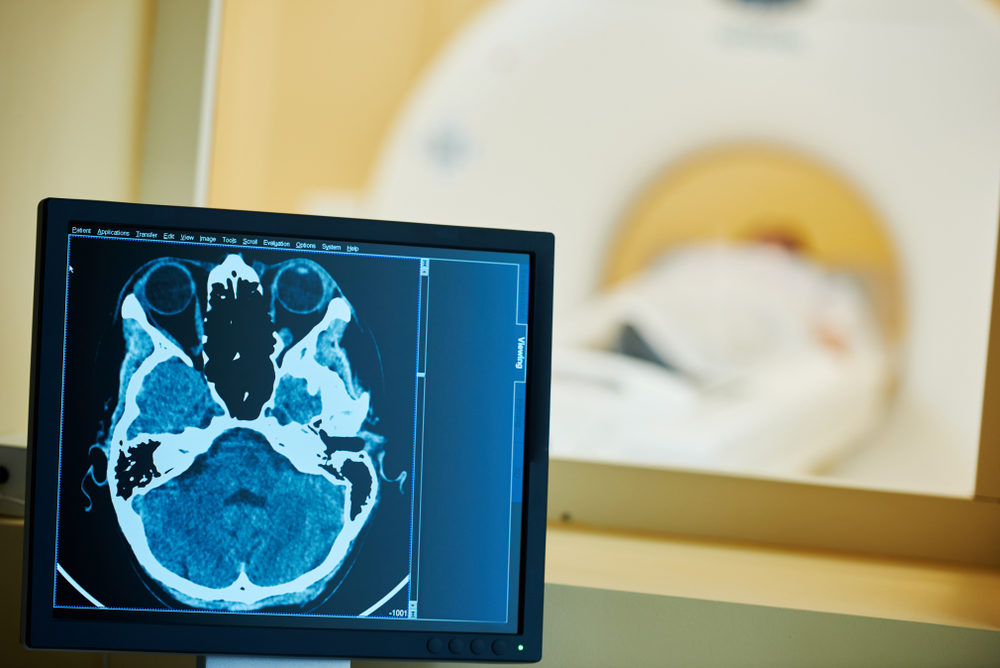Chelation Fails To Reverse Gadolinium Deposition: Study

Amid increasing concerns about the side effects of gadolinium deposits caused by MRI contrast dyes, a new study suggests that the buildup of toxic metals in the body can not be removed by chelation; a procedure that is commonly used to rid the body of lead, iron and other metals that cause health risks.
Gadolinium-based contrast agents are used during MRI and MRA exams to help enhance the images. However, in recent months concerns have emerged about the risk of gadolinium deposition, with studies finding that some users are left with deposits of the toxic metal in their brain, or other parts of the body, long after receiving the contrast dye.
Chelation is a chemical process that binds certain molecules and ions to metal ions, which is designed to allow toxic substances to move through the body and be excreted without posing health risks. It is also commonly used as a treatment for lead poisoning, iron overload and arsenic build up in the body, known as chelation therapy.

Do You Know About...
Childhood Diabetes Lawsuits Against Junk Food Industry
Lawyers are now pursing financial compensation for families of children diagnosed with Type II diabetes, fatty liver disease and other chronic illnesses caused by addictive and harmful substances in ultra-processed foods.
Gadolinium used in MRI contrast agents is chelated before it is injected, which is supposed to allow the toxic metal to pass through the body without causing health problems. However, if this process breaks down, users may be left with a variety of symptoms now commonly referred to as “gadolinium deposition disease”, including persistent headaches, cognitive problems, bone and joint pain, thickening of the skin and other complications.
In a study published this month in the medical journal Magnetic Resonance Imaging, researchers from the University of North Carolina, Chapel Hill, tried to rechelate gadolinium deposits, to see if it could be removed from the body.
During the study, researchers injected rats with the gadolinium contrast Omniscan, and then used chelating agents, either concomitantly or one, four, or eight hours after they received the gadolinium (Gd) doses. They then looked at the rats’ tissues to assess whether the process helped remove gadolinium from their bodies. They also ran a number of simulations that predicted certain trends, and then compared those with results from the rat tissues.
According to their findings, concomitant treatment did not produce any significant reduction in gadolinium concentrations in any organs of the rats’ bodies. The one hour timepoint led to a non-significant increase in gadolinium levels in the kidney, brain and femur, the researchers found.
“Both the simulation and rat study did not identify major benefits for chelation at the doses given, despite the simulation assuming all Gd deposited in tissues is unchelated,” the researchers concluded. “The potential redistribution in the rat study provide a compelling result that may impact the clinical relevance of further work investigating rechelation of Gd. Future work should further describe the three-dimensional dose-time-response relationship for preventing Gd deposition, and how that relates to long-term Gd toxicities.”
Manufacturers of gadolinium-based contrast agents have indicated that the metal is safely processed out of the body before the protective coating breaks down, but concerns have emerged about a number of safety risks that some users may experience.
About a decade ago, the first problems with gadolinium contrast agents emerged among individuals with impaired kidney function, who face an increased risk of developing a severe reaction known as nephrogenic systemic fibrosis (NSF), which causes a progressive thickening and hardening of the skin that severely restricts movement and ultimately results in confinement to a wheelchair or death.
More recently, concerns have emerged about MRI contrast dye reactions among individuals with normal kidneys, as studies have found that the gadolinium may buildup in the body and result in a number of symptoms, such as persistent headaches, cognitive issues, joint pain and other side effects.
The findings come as manufacturers face a growing number of MRI contrast dye lawsuits have been filed on behalf of individuals suffering painful and debilitating reactions after gadolinium deposition allegedly caused fibrosis of organs, bones and skin.
1 Comments






CelesteMay 19, 2020 at 1:12 pm
I have Gadolinium in my body from Omniscan and Magnevist injections given to me for several MRI's I received a few years ago. I have been suffering from hardened fingertips, numbness in my arms and legs, rash and flaking skin on the fronts of my legs, foggy thinking, headaches, painful joints and fatigue. I need an attorney to help me.